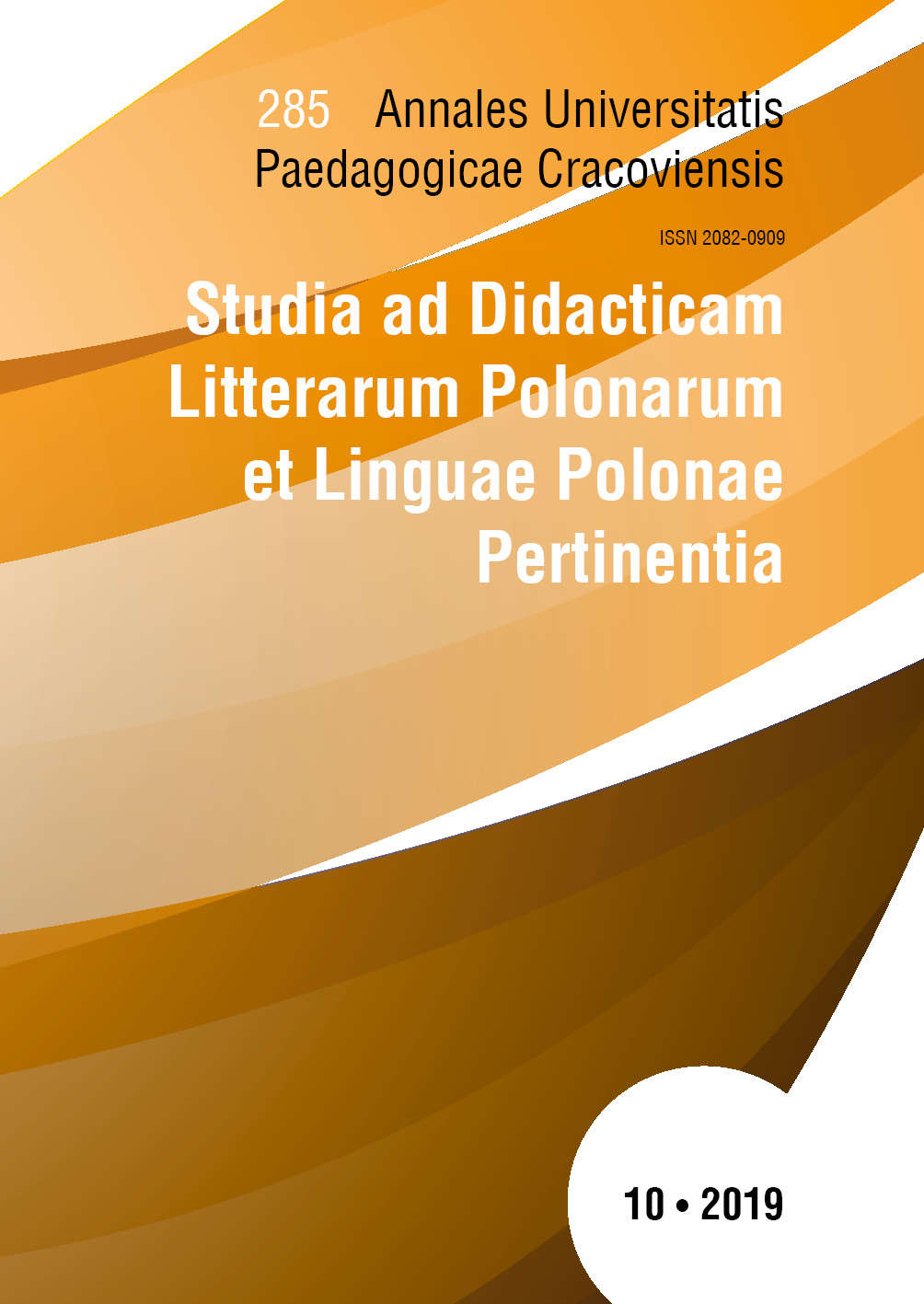Abstract
The intensification of migration processes observed throughout Europe poses new tasks also to the Polish educational system. The growing number of foreign students is a challenging multi-aspect challenge that modern education must and must face. The effective and full functioning of the foreign child at school is determined by the effectiveness of various activities: educational, educational, pedagogical and psychological. The main goal, of course, is to master the basics of the Polish language, first of all in the field of communicative competence and mastering the language of schooling (JES). However, taking into account the aspect of full integration of a foreign child with the school environment, it should also be included in the praxeological assumptions of action in the field of cultural education. After mastering the language of schooling, and maybe even in parallel with it, there should be training of the linguistic and non-linguistic competences needed by the child to function in the time of school and also free from school. It becomes necessary then to have a cultural code, thanks to which it will be able to communicate with peers. The aim would be to enable a child with experience of migrating participation in a shared cultural experience.References
A., Pawlic-Rafałowska E., Wasilewska-Łaszczuk J., Zasuńska M., Ku wielokulturowej
szkole w Polsce. Pakiet edukacyjny z programem nauczania języka polskiego jako drugiego dla I, II i III etapu edukacyjnego (w szkołach m. st. Warszawy), Warszawa
2010, http://www.wlaczpolske.pl/wielokulturowaszkola.pdf.
Bourdieu P., Passeron J.C., Reprodukcja. Elementy teorii systemu nauczania, tłum. E. Neyman,
Warszawa 2006.
Brake T., Walker D., Walker T., Doing Business Internationally, Irwin 1995.
Gębal P.E., Dydaktyka kultury polskiej w kształceniu językowym cudzoziemców, Kraków
2010.
Gębal P.E., Podstawy dydaktyki języka polskiego jako drugiego. Podejście integracyjno-inkluzyjne,
Kraków 2018.
Hall E.T., Beyond Culture, New York 1989.
Katan D., Translating Cultures, Manchester 1999.
Lewowicki T., W poszukiwaniu modelu edukacji międzykulturowej, [w:] Edukacja międzykulturowa
w Polsce i na świecie, red. T. Lewowicki, Katowice 2000.
Młynarczuk-Sokołowska A., Szostak-Król K., Zrozumieć innego. Międzykulturowa koncepcja
komunikacyjna w procesie uczenia się języka polskiego jako obcego, Białystok
2016.
Nikitorowicz J., Kreowanie tożsamości dziecka. Wyzwania edukacji międzykulturowej,
Gdańsk 2005.
Pamuła-Behrens M., Szymańska M., W polskiej szkole. Materiały do pracy z uczniami z doświadczeniem
migracji, http://fundacjareja.eu/przewodnik-dla-nauczyciela/.
Rogalska-Marasińska A., Edukacja międzykulturowa na rzecz zrównoważonego rozwoju,
Łódź 2017.
Szybura A., Nauczanie polskiego i francuskiego jako języków edukacyjnych. Ujęcie porównawcze,
[w:] O lepsze jutro studiów polonistycznych w świecie. Glottodydaktyka polonistyczna
dziś, red. I. Janowska, P. Gębal, Kraków 2016.
Żydek-Bednarczuk U., Spotkanie kultur. Komunikacja i edukacja międzykulturowa w glottodydaktyce,
Katowice 2015.

